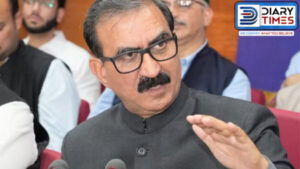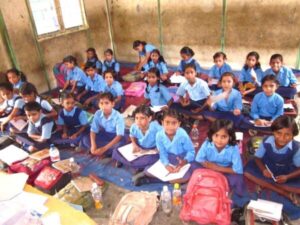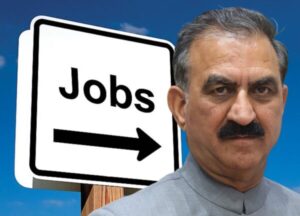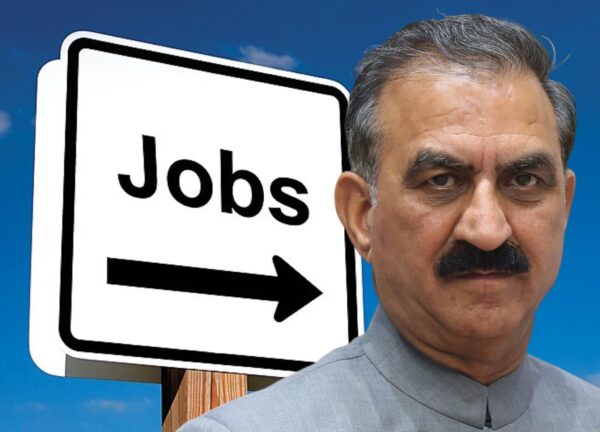
By: Shrey Awasthi
On International Literacy Day, Chief Minister Sukhvinder Singh Sukhu stood at Shimla’s iconic Peterhof and proudly declared Himachal Pradesh a “Purn Sakshar” (fully literate) state, with a literacy rate of 99.02%, the highest in India under the Ullas – New India Literacy Programme. This announcement put Himachal ahead of Mizoram (98.02%), Lakshadweeр (97.3%), and Tripura (97.3%), officially making it the number one literate state in the country.
This achievement is not just about numbers; it reflects decades of commitment. Himachal has consistently invested in schools and colleges, even in the remotest villages. Teachers have trekked miles through snow, parents have sacrificed, and communities have supported the cause of education. From high female literacy to near-universal schooling, Himachal has set an example for India.
Yet, as celebrations echo, another reality casts a shadow: literacy without livelihood is a half victory.
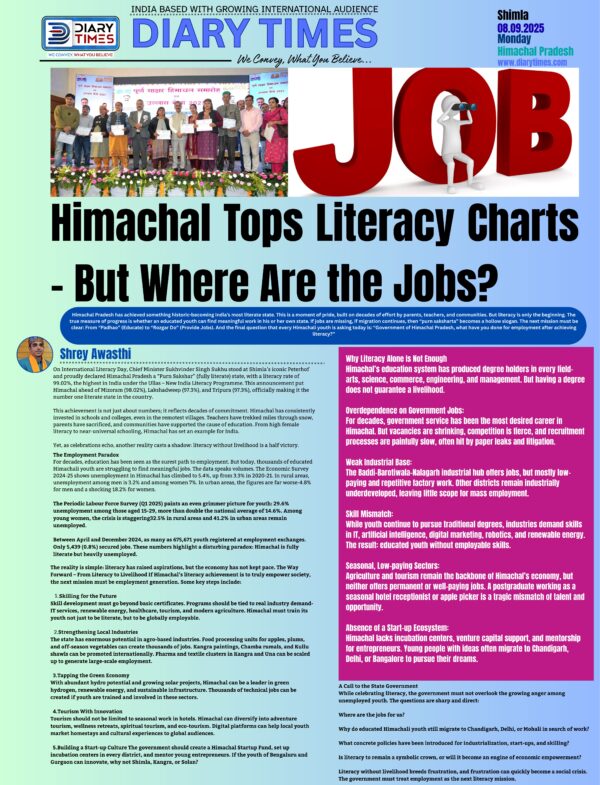
The Employment Paradox
For decades, education has been seen as the surest path to employment. But today, thousands of educated Himachali youth are struggling to find meaningful jobs. The data speaks volumes. The Economic Survey 2024-25 shows
unemployment in Himachal has climbed to 5.4%, up from 3.3% in 2020-21. In rural areas, unemployment among men is 3.2% and among women 7%. In urban areas, the figures are far worse-4.8% for men and a shocking 18.2% for
women.
The Periodic Labour Force Survey (Q1 2025) paints an even grimmer picture for youth: 29.6% unemployment among those aged 15-29, more than double the national average of 14.6%. Among young women, the crisis is staggering32.5% in rural areas and 41.2% in urban areas remain unemployed.
Between April and December 2024, as many as 675,671 youth registered at employment exchanges. Only 5,439 (0.8%) secured jobs. These numbers highlight a disturbing paradox: Himachal is fully literate but heavily unemployed.
Why Literacy Alone Is Not Enough
Himachal’s education system has produced degree holders in every field-arts, science, commerce, engineering, and management. But having a degree does not guarantee a livelihood.
Overdependence on Government Jobs:
For decades, government service has been the most desired career in Himachal. But vacancies are shrinking, competition is fierce, and recruitment processes are painfully slow, often hit by paper leaks and litigation.
Weak Industrial Base:
The Baddi-Barotiwala-Nalagarh industrial hub offers jobs, but mostly low-paying and repetitive factory work. Other districts remain industrially underdeveloped, leaving little scope for mass employment.
Skill Mismatch:
While youth continue to pursue traditional degrees, industries demand skills in IT, artificial intelligence, digital marketing, robotics, and renewable energy. The result: educated youth without employable skills.
Seasonal, Low-paying Sectors:
Agriculture and tourism remain the backbone of Himachal’s economy, but neither offers permanent or well-paying jobs. A postgraduate working as a seasonal hotel receptionist or apple picker is a tragic mismatch of talent and opportunity.
Absence of a Start-up Ecosystem:
Himachal lacks incubation centers, venture capital support, and mentorship for entrepreneurs. Young people with ideas often migrate to Chandigarh, Delhi, or Bangalore to pursue their dreams.
The reality is simple: literacy has raised aspirations, but the economy has not kept pace. The Way Forward – From Literacy to Livelihood If Himachal’s literacy achievement is to truly empower society, the next mission must be employment generation. Some key steps include:
- Skilling for the Future
Skill development must go beyond basic certificates. Programs should be tied to real industry demand-IT services, renewable energy, healthcare, tourism, and modern agriculture. Himachal must train its youth not just to be literate, but to be globally employable. - Strengthening Local Industries
The state has enormous potential in agro-based industries. Food processing units for apples, plums, and off-season vegetables can create thousands of jobs. Kangra paintings, Chamba rumals, and Kullu shawls can be promoted internationally. Pharma and textile clusters in Kangra and Una can be scaled up to generate large-scale employment. - Tapping the Green Economy
With abundant hydro potential and growing solar projects, Himachal can be a leader in green hydrogen, renewable energy, and sustainable infrastructure. Thousands of technical jobs can be created if youth are trained and involved in these sectors. - Tourism With Innovation
Tourism should not be limited to seasonal work in hotels. Himachal can diversify into adventure tourism, wellness retreats, spiritual tourism, and eco-tourism. Digital platforms can help local youth market homestays and cultural experiences to global audiences. - Building a Start-up Culture The government should create a Himachal Startup Fund, set up incubation centers in every district, and mentor young entrepreneurs. If the youth of Bengaluru and Gurgaon can innovate, why not Shimla, Kangra, or Solan?
A Call to the State Government
While celebrating literacy, the government must not overlook the growing anger among unemployed youth. The questions are sharp and direct:
Where are the jobs for us?
Why do educated Himachali youth still migrate to Chandigarh, Delhi, or Mohali in search of work?
What concrete policies have been introduced for industrialization, start-ups, and skilling?
Is literacy to remain a symbolic crown, or will it become an engine of economic empowerment?
Literacy without livelihood breeds frustration, and frustration can quickly become a social crisis. The government must treat employment as the next literacy mission.
Conclusion
Himachal Pradesh has achieved something historic-becoming India’s most literate state. This is a moment of pride, built on decades of effort by parents, teachers, and communities. But literacy is only the beginning. The true measure of progress is whether an educated youth can find meaningful work in his or her own state. If jobs are missing, if migration
continues, then “purn saksharta” becomes a hollow slogan.
The next mission must be clear: From “Padhao” (Educate) to “Rozgar Do” (Provide Jobs). And the final question that every Himachali youth is asking today is: “Government of Himachal Pradesh, what have you done for employment after achieving literacy?”

Continuing the achievement of the journey of effectiveness and credibility of more than 10 years in the career of journalism, as a woman journalist, I am Serving as the founder, promoter and editor of DiaryTimes with the trust and support of all. My credible coverage may not have given a big shape to the numbers, but my journey presents articles that make you aware of the exact and meaningful situations of Himachal’s politics, ground issues related to the public, business, tourism and the difficult geographical conditions of the state and financial awareness. DiaryTimes, full of the experience of my precise editorial expertise, is awakening the flame of credible journalism among all of you, so that the eternal flame of meaningful change can be lit in the life of the people of the state and the atrocities being committed against the people can be brought to the fore, I am motivated for that. If even a small change comes with the power of my journalism and the whole world becomes a witness to that issues, then I will consider myself fortunate.

